As a pet owner, you know how important it is to keep your home safe for your pets. But did you know that many houseplants can be harmful to them? These plants can cause anything from mild discomfort to serious health issues.
Choosing the right plants is key. The ASPCA has a list of safe and toxic plants to help you decide. By picking plants that are safe for your pets, you can enjoy gardening indoors without worrying about their health.
In this article, we’ll look at six ASPCA-approved indoor plants that are both beautiful and safe for your pets. You’ll learn about the Spider Plant and the elegant Parlor Palm, among others. These pet-friendly options will add some green to your home.
Key Takeaways
- Learn about six ASPCA-approved indoor plants safe for cats and dogs.
- Discover how to create a pet-friendly environment in your home.
- Understand the importance of choosing non-toxic plants for your pets.
- Explore a variety of pet-friendly plants to suit your home decor.
- Get tips on enjoying indoor gardening with your furry friends by your side.
Table of Contents
What Are Pet-Friendly Houseplants?
Indoor plants can brighten up any home. But, for pet owners, it’s key to pick safe ones. Pet-friendly houseplants are safe for cats and dogs, even if they chew on them.
Understanding Plant Toxicity for Pets
Some plants can harm pets, causing mild to serious problems. The ASPCA Animal Poison Control Center offers crucial info on plant safety. This helps pet owners choose the right plants for their homes.
Some plants have calcium oxalate crystals that irritate pets’ mouths and stomachs. Others have toxic compounds that can affect pets’ hearts or brains.
| Toxic Compound | Effect on Pets |
|---|---|
| Insoluble calcium oxalate crystals | Oral and gastrointestinal irritation |
| Cardiac glycosides | Cardiovascular issues |
| Alkaloids | Neurological problems |
Benefits of Having Indoor Plants
Indoor plants have many benefits, despite the risks. They purify the air, boost mental health, and reduce stress. By picking safe plants, you can enjoy these perks while keeping pets safe. Plants also make rooms look better, making them feel cozier. Studies show they can lower blood pressure and improve mood.
The Role of ASPCA in Plant Safety
The ASPCA is key in keeping pets safe from plants. They list safe and toxic plants. This info is crucial for pet owners who want a safe home for their pets. By using the ASPCA’s list, pet owners can pick safe plants. This reduces the risk of plant toxicity and keeps pets safe.
Top 6 Pet-Friendly Houseplants
Choosing the right indoor plants can be tough for pet owners. But, there are many safe options for your pets. The ASPCA has a list of non-toxic plants for cats and dogs, making it easier to decorate your home.
Overview of Each Recommended Plant
The top 6 pet-friendly houseplants are the Spider Plant, Boston Fern, Areca Palm, Bamboo Palm, Prayer Plant, and Parlor Palm. Each plant is safe and adds beauty to your home.
- Spider Plant: Known for its ease of care and air-purifying qualities.
- Boston Fern: Adds a lush, green texture to any room and thrives in humid conditions.
- Areca Palm: Brings a tropical vibe and is effective in purifying the air.
- Bamboo Palm: Stylish and safe, it’s a great choice for pet owners.
- Prayer Plant: Vibrant and colorful, it’s a great addition to any indoor garden.
- Parlor Palm: Classic and easy to care for, it’s perfect for homes with pets.
Why These Plants Are Safe for Pets
These plants are safe because they are non-toxic to cats and dogs, according to the ASPCA. Here’s a quick overview of their safety features and benefits:
| Plant Name | Safety Feature | Benefits |
|---|---|---|
| Spider Plant | Non-toxic | Air purification, easy care |
| Boston Fern | Pet-friendly | Adds humidity, lush texture |
| Areca Palm | Safe for pets | Tropical vibe, air purification |
| Bamboo Palm | Non-toxic | Stylish, safe for pets |
| Prayer Plant | Pet-friendly | Vibrant colors, unique foliage |
| Parlor Palm | Safe for cats and dogs | Classic look, easy maintenance |
By choosing these pet-friendly houseplants, you can create a beautiful and safe indoor gardening space for both you and your pets to enjoy. Imagine having a lush, green home that’s safe for your furry friends to explore!
1. Spider Plant: A Green Companion
The Spider Plant is a great choice for pet owners who want greenery at home. It’s safe for cats and dogs and easy to care for. This makes it perfect for those who are always busy. The good news is that the popular and easy-to-care-for spider plant, Chlorophytum comosum, is considered non-toxic to both cats and dogs. This makes it an excellent choice for households with curious pets who might be prone to nibbling on accessible greenery. You can rest assured that having a spider plant in your living space won’t pose a significant threat to your beloved companions, allowing you to enjoy its aesthetic appeal without worry.
While spider plants are not poisonous, it is important to note that consuming large quantities of any plant material can lead to mild digestive upset for your pets. You might observe symptoms such as vomiting or diarrhea if your cat or dog ingests a significant amount of the leaves. Interestingly, some cats are particularly drawn to spider plants due to their dangling plantlets, which can be enticing to play with. To prevent any potential stomach discomfort and keep your plant looking its best, it’s a good practice to place your spider plant in a location that is out of your pet’s easy reach, such as in a hanging basket or on a high shelf.
Beyond their pet-friendly nature, spider plants offer a host of other benefits that make them a fantastic addition to any indoor garden. They are renowned for their air-purifying qualities, helping to remove common household toxins from the environment. Furthermore, their low-maintenance requirements make them ideal for both seasoned plant enthusiasts and beginners alike. They thrive in a variety of lighting conditions and are quite forgiving when it comes to watering.
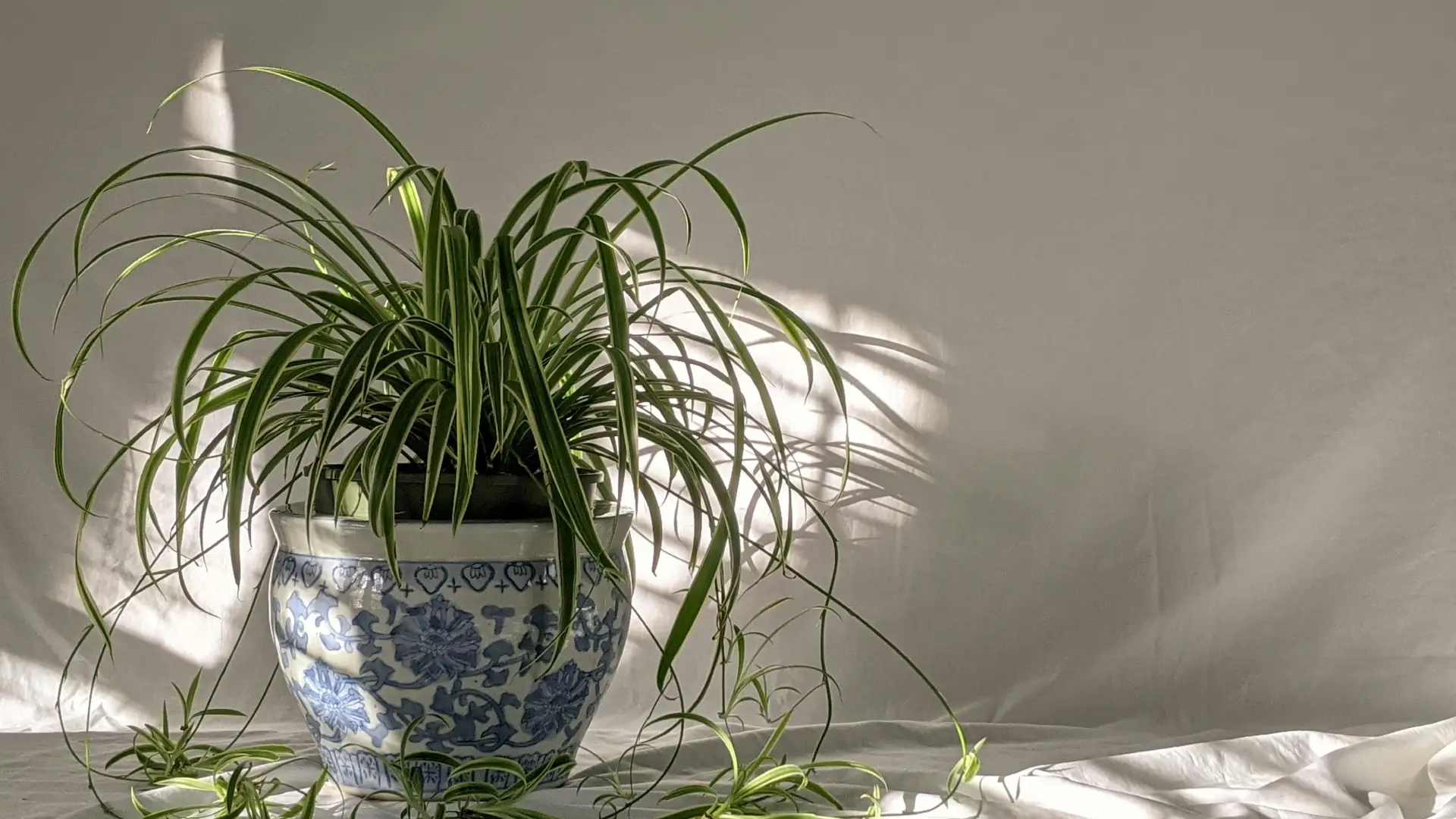
Characteristics of the Spider Plant
The Spider Plant has long, thin leaves and produces white flowers and baby plants. It’s also good at purifying the air, removing toxins like formaldehyde and xylene.
- Easy to propagate through spiderettes
- Thrives in bright, indirect light
- Requires moderate watering
Easy Care Tips for Spider Plants
Caring for your Spider Plant is simple. It needs bright, indirect light and should be watered thoroughly. Let the soil dry a bit before watering again. You can also share your plant by dividing the spiderettes.
To keep your Spider Plant healthy, follow these tips:
- Water moderately, avoiding overwatering
- Fertilize sparingly during the growing season
- Prune any brown or damaged leaves
For more info on Spider Plants and pets, visit Plantology USA. They have detailed info on pet-safe plants.
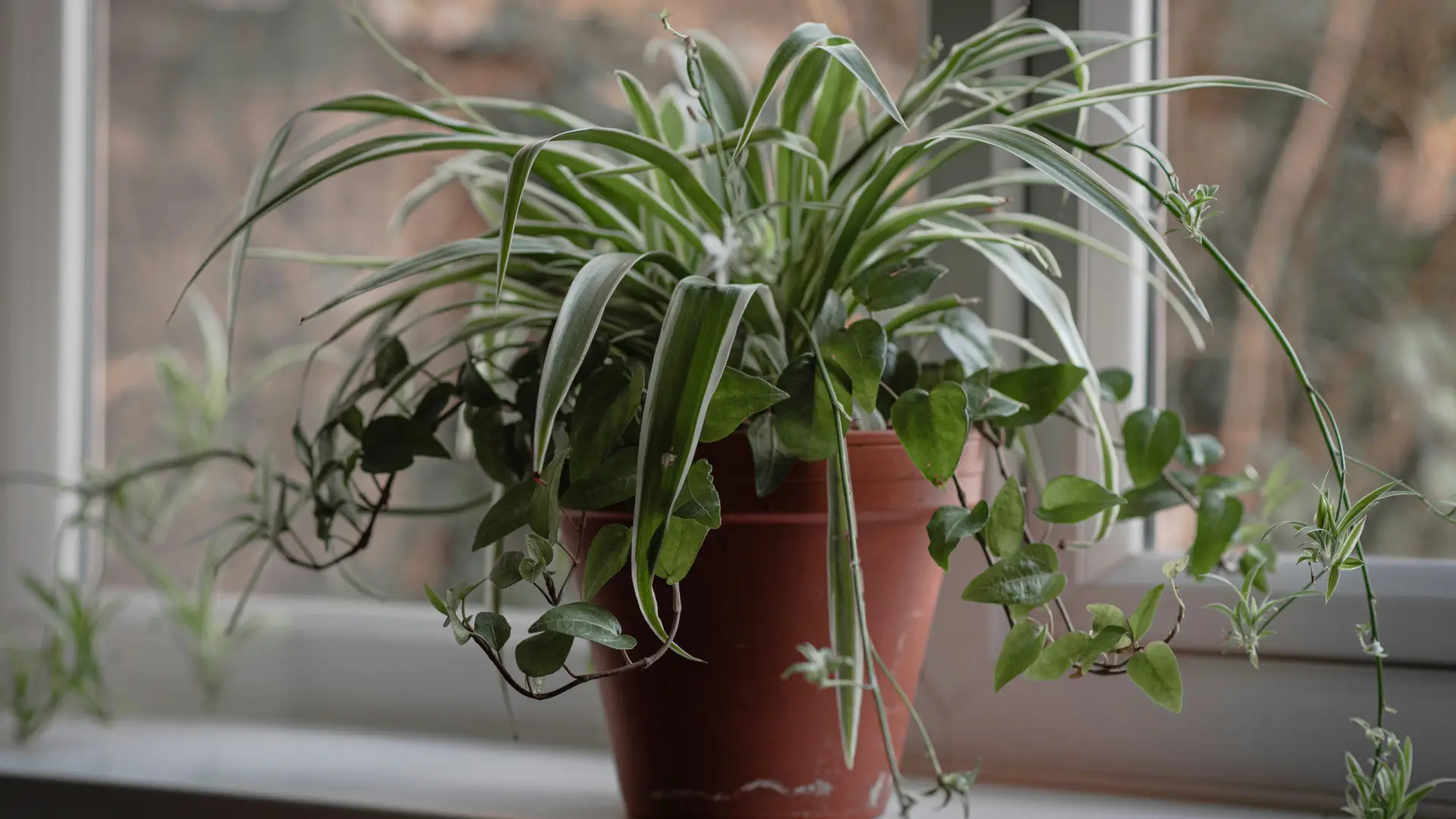
2. Boston Fern: Lush and Safe
Looking for a stylish, non-toxic plant for your home? The Boston Fern is a great choice. It’s safe for pets and adds elegance to any room. The Boston Fern, scientifically known as Nephrolepis exaltata, is a popular houseplant appreciated for its lush, feathery fronds that create a graceful, arching display. It’s also known as the sword fern and is native to tropical regions, thriving in humid environments like forests and swamps.
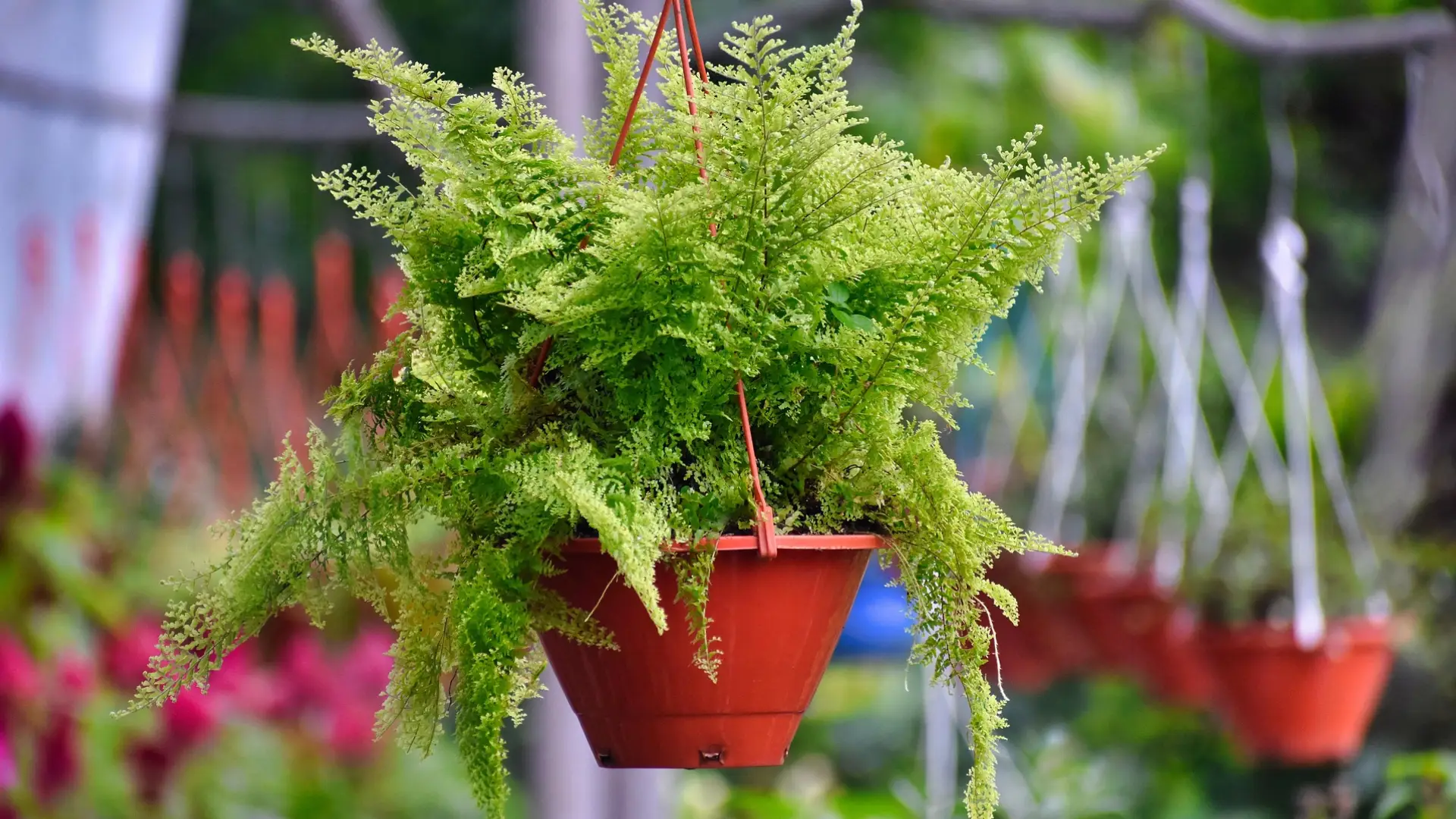
Care and Cultivation:
Boston Ferns are relatively easy to care for, but they do have some specific needs. They prefer bright, indirect sunlight, so an east-facing window is ideal. Direct sunlight can scorch their delicate fronds. These ferns love high humidity, so regular misting, a pebble tray, or placing them in a bathroom can help them thrive. They prefer consistently moist soil, but it should be well-drained to prevent root rot.
When it comes to feeding, a balanced liquid fertilizer diluted to half-strength can be applied every 4-6 weeks during the growing season (spring and summer). It’s best to reduce feeding in the fall and winter. Pruning is mainly for removing any dead or yellowing fronds to encourage new growth and maintain the plant’s appearance.
Ideal Conditions for Boston Ferns
Boston Ferns love high humidity and indirect light. Place it in a spot with filtered sunlight. Keep the area humid by misting the plant or using a humidifier.
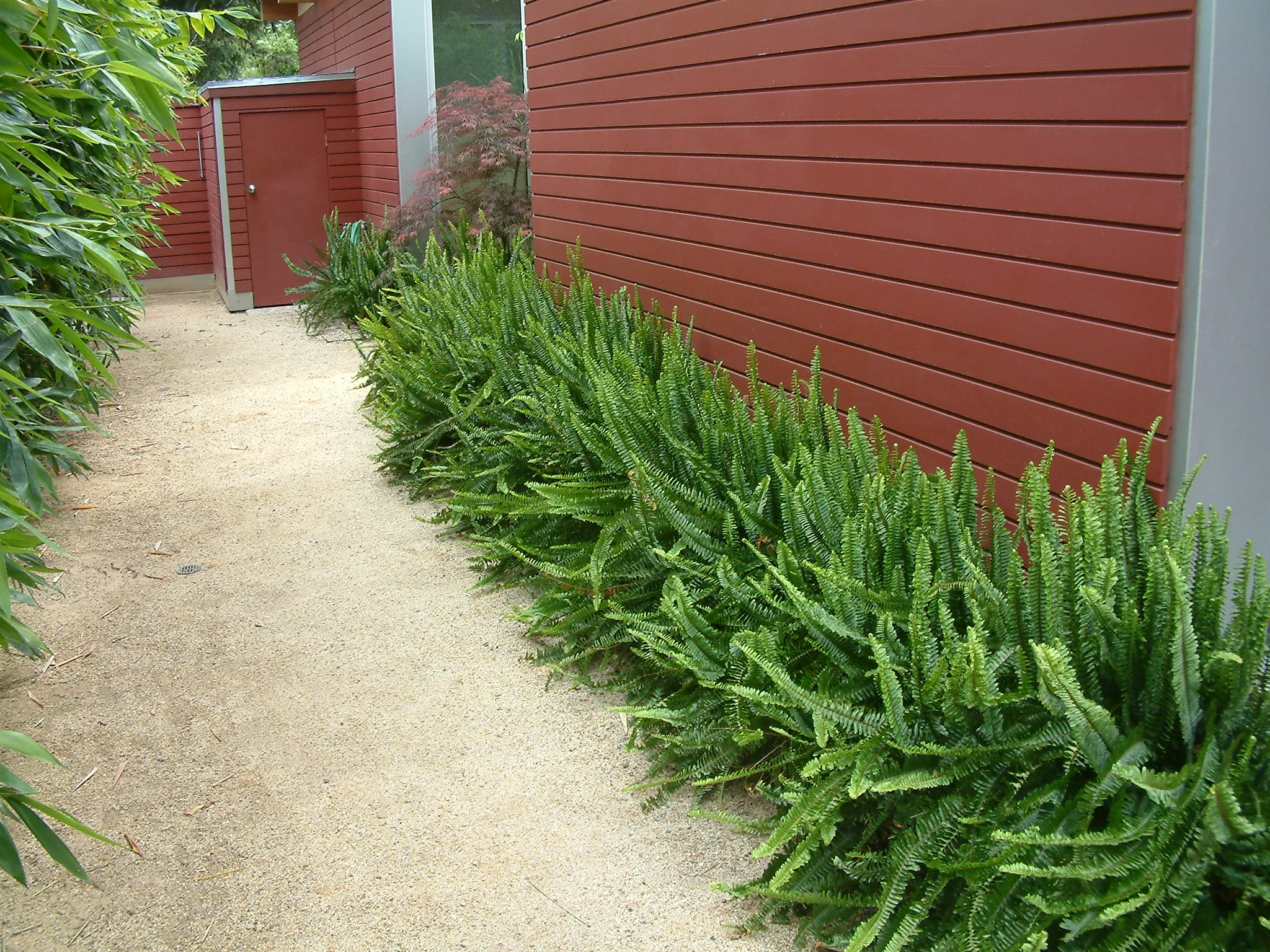
Key Care Tips:
- Maintain high humidity around the plant.
- Provide indirect light to prevent scorching the leaves.
- Keep the soil consistently moist but not waterlogged.
Health Benefits for Pets
Boston Ferns are safe for pets. But, indoor plants can make your home healthier. They help purify the air, reducing dust and pollutants for your pets. A significant advantage of the Boston Fern is that it is non-toxic to both cats and dogs, as confirmed by the ASPCA. This makes it a safe choice for pet owners. While it’s not harmful if your pet nibbles on a frond, it’s still best to discourage them from eating large amounts of any houseplant to avoid potential mild digestive upset. It’s important to distinguish true ferns like the Boston Fern from other plants that have “fern” in their name but may be toxic, such as the asparagus fern.
Choosing pet-friendly plants like the Boston Fern makes your home safer and more enjoyable for everyone.

3. Areca Palm: Tropical Vibes Indoors
Adding a touch of the tropics to your home is easy with the Areca Palm. It’s stylish and safe for pets. This plant looks great and has many benefits for you and your pets.
Care Instructions for Areca Palms
To keep your Areca Palm happy, it needs the right conditions. Bright, indirect light is best, as direct sun can burn the leaves. It’s also important to water it regularly but not too much, to avoid root rot.
- Water your Areca Palm when the top inch of soil feels dry to the touch.
- Keep the air humid, between 40-60% relative humidity.
- Fertilize it in spring and summer with a balanced, water-soluble fertilizer.
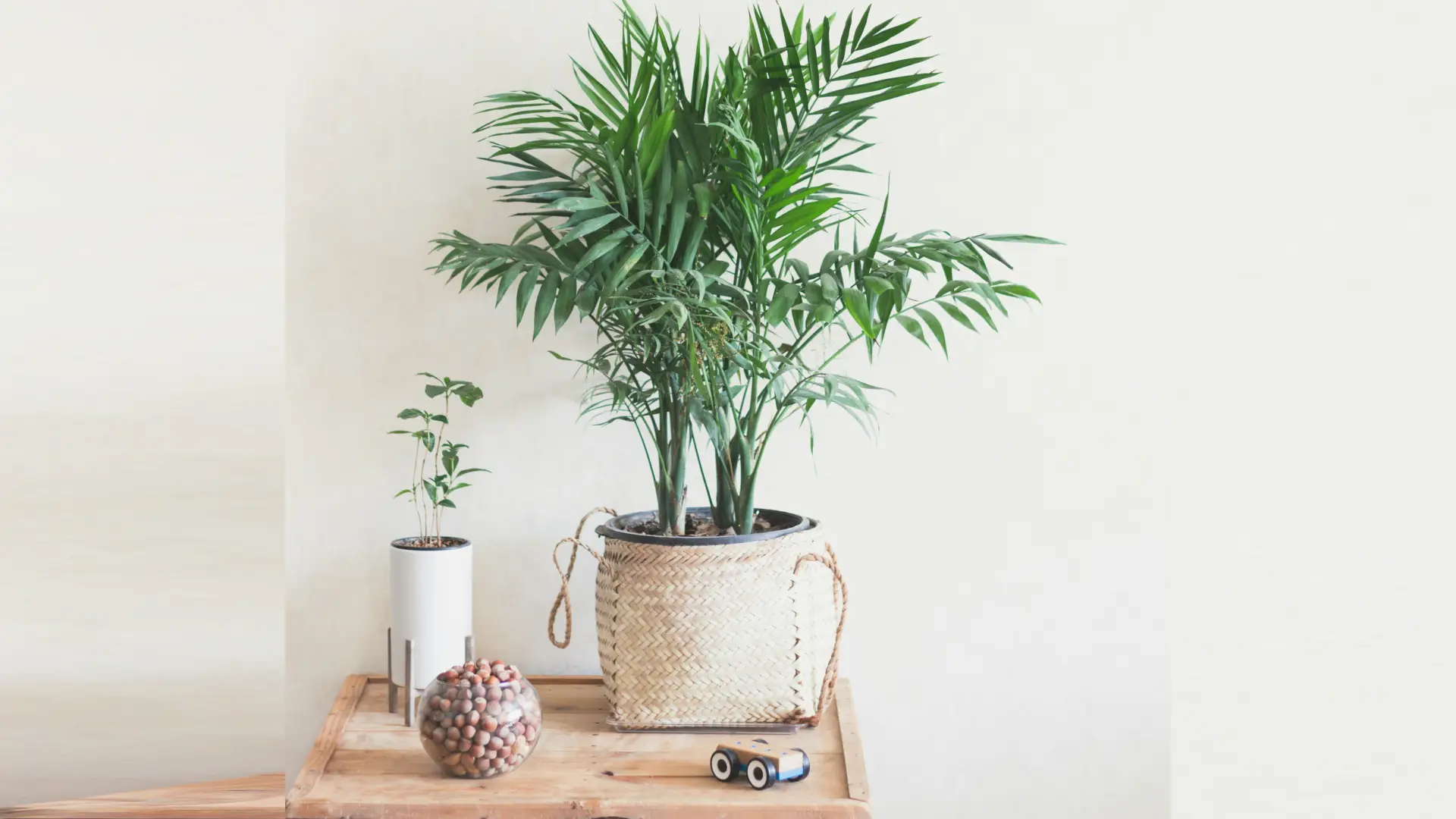
Enhancing Air Quality with Areca Palms
One big plus of having an Areca Palm is its ability to improve air quality. These plants remove toxins like formaldehyde, xylene, and toluene. This makes your home healthier for you and your pets.
| Toxin Removed | Benefit |
|---|---|
| Formaldehyde | Reduces risk of respiratory issues |
| Xylene | Minimizes headaches and dizziness |
| Toluene | Decreases risk of neurological damage |
Experts say Areca Palms are top picks for improving indoor air quality. They remove toxins quickly.
Areca Palms are not only beautiful, but they’re also great air purifiers.” — NASA Study on Air Purifying Plants
With the right care, your Areca Palm will bring tropical beauty to your home. It will also help make your indoor air healthier.
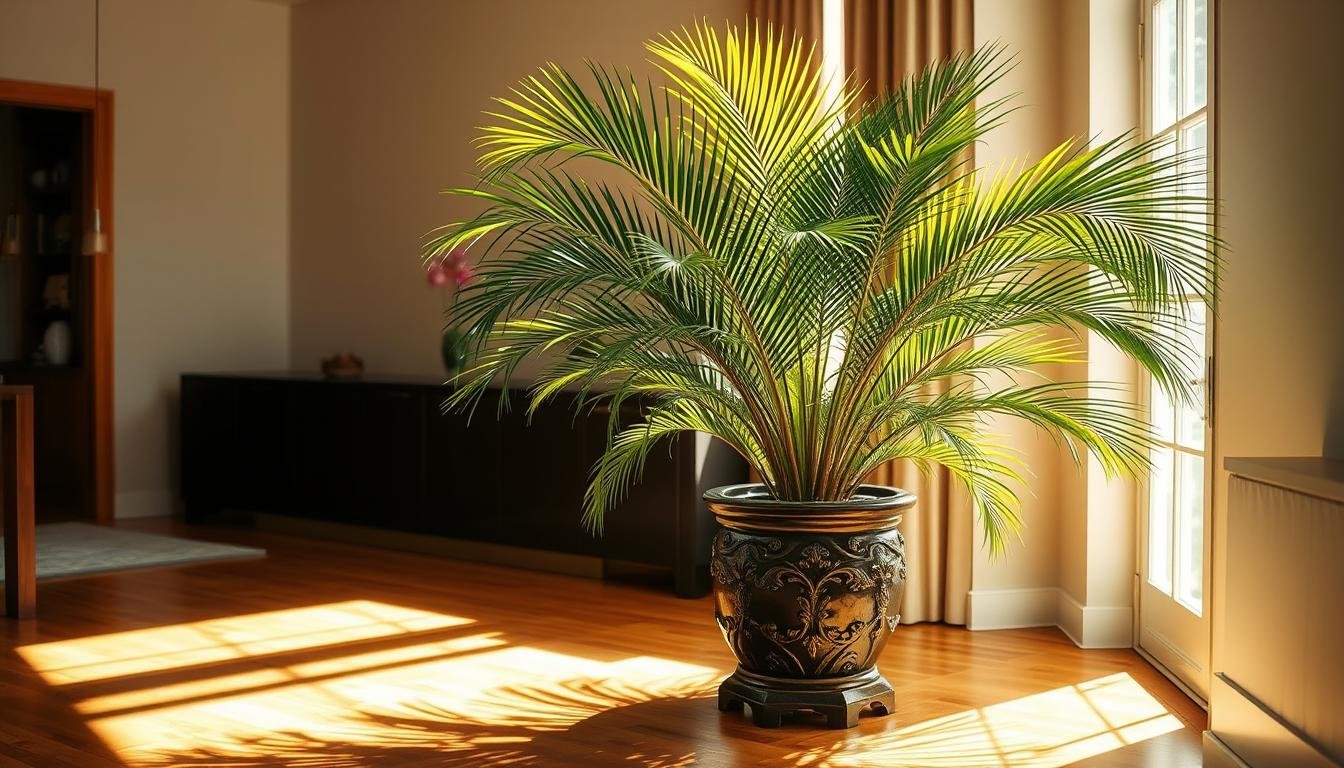
4. Bamboo Palm: Stylish and Safe
Looking for a pet-friendly houseplant that’s both elegant and easy to care for? The Bamboo Palm is a great choice. It’s stylish and safe for your furry friends, making it perfect for pet owners.
Bamboo Palm’s Unique Features
The Bamboo Palm has feathery leaves and can grow tall. It’s a great choice for adding height to your indoor garden. Its slender stems and lush foliage give it a tropical feel, bringing the outdoors inside.
One of the key benefits of the Bamboo Palm is its low-maintenance requirements. It’s perfect for busy pet owners who want indoor plants without the hassle.
Maintenance Tips for Bamboo Palms
Caring for your Bamboo Palm is easy. Place it in a spot with bright, indirect light. Water it thoroughly, letting the soil dry slightly between waterings. Fertilize regularly during the growing season to promote healthy growth.
Prune any dead or damaged leaves to keep your Bamboo Palm looking its best. This also prevents harm to your pets.
By following these simple care tips, you can enjoy your Bamboo Palm’s beauty and benefits. And keep your pets safe and happy.
5. Prayer Plant: A Vibrant Addition
The Prayer Plant is not only visually striking but also safe for your furry friends, making it a perfect indoor plant. With its vibrant, colorful leaves, it adds a touch of elegance and warmth to any room.
Prayer Plants are known for their unique foliage and ability to thrive in indoor conditions. They prefer high humidity, which makes them a great choice for bathrooms or kitchens where the air tends to be more humid.
Care Requirements for Prayer Plants
To keep your Prayer Plant happy and healthy, ensure it receives the right care. Here are some key tips:
- Maintain high humidity around the plant, either by placing it in a humid room or using a humidifier.
- Provide indirect sunlight. Direct sunlight can cause the leaves to fade.
- Water the plant when the top inch of soil feels dry to the touch. Avoid overwatering, which can lead to root rot.
- Fertilize your Prayer Plant during the growing season (spring and summer) with a balanced, water-soluble fertilizer.
Why Pets Love Prayer Plants
Pets are often attracted to the Prayer Plant’s colorful and dynamic leaves. While the plant is non-toxic to pets, it’s still important to monitor your pets’ interaction with it to prevent any potential gastrointestinal upset from ingesting plant material.
The Prayer Plant’s unique appearance can make it a fun and engaging addition to your home, providing a safe and pet-friendly greenery option. As one of the safe indoor plants for animals, it allows you to enhance your home’s aesthetic without compromising your pets’ safety.
6. Parlor Palm: Classic and Easy to Care For
If you want a pet-friendly houseplant that’s both classic and easy to care for, the Parlor Palm is perfect. It’s safe for pets and adds elegance to your home.
The Resilience of Parlor Palms
Parlor Palms are known for their ability to thrive in low-light conditions. This makes them great for rooms with little natural light. Their slender stems and lush foliage create a peaceful ambiance.
Key Benefits of Parlor Palms:
- Low maintenance requirements
- Thrives in low-light conditions
- Pet-friendly and safe for cats and dogs
- Enhances indoor air quality
How Parlor Palms Benefit Your Home
Parlor Palms are not just beautiful; they also improve indoor air quality. They add a natural touch, making your home cozy for both humans and pets.
Here’s a comparison of Parlor Palms with other popular pet-friendly houseplants:
| Plant | Light Requirements | Maintenance Level | Pet-Friendly |
|---|---|---|---|
| Parlor Palm | Low | Easy | Yes |
| Spider Plant | Medium | Easy | Yes |
| Boston Fern | High | Moderate | Yes |
In conclusion, the Parlor Palm is a great choice for a stylish, low-maintenance, and pet-friendly houseplant. Its resilience and benefits make it a wonderful addition to any home.
How to Introduce New Indoor Plants Safely
When you bring new plants home, think about your pets’ safety first. Take it slow to make sure both your pets and plants get along well.
Gradual Introduction Techniques
Start by putting new plants in a room away from your pets. This lets them get used to the plants’ smell and look without any danger.
After a few days, you can move the plants to where you want them. Watch how your pets react closely. Keep the plants out of reach at first to avoid any accidents.
Steps for Gradual Introduction:
- Place new plants in a separate room.
- Allow pets to become familiar with the plants’ presence.
- Gradually move plants to their final locations.
- Monitor pet reactions closely.
Observing Pet Reactions to New Plants
It’s important to watch how your pets react to new plants. Look for signs like sniffing or trying to eat the plants. Some pets might not care, while others will be more curious.
If your pet shows bad signs like vomiting, acting tired, or drooling a lot, call your vet right away. Also, make sure to know what plant it is to check if it’s safe for pets.
| Plant Reaction | Pet Response | Action |
|---|---|---|
| Curiosity | Sniffing or nibbling | Monitor closely, keep out of reach |
| Indifference | No reaction | No immediate action needed |
| Adverse Reaction | Vomiting, lethargy, drooling | Consult veterinarian, remove plant |
Best Practices for Plant Care in a Pet-Friendly Home
To keep a home where pets and plants live together, it’s key to care for plants right. “A well-planned indoor garden can be a haven for both pets and their owners,” says a renowned horticulturist. It’s not just about picking safe plants. You also need to care for and place them wisely in your home.
Safe Placement of Indoor Plants
Where you put plants is very important for a pet-friendly home. Pets, especially cats and dogs, like to explore by taste and touch. So, keep plants out of their reach. Use hanging baskets or high shelves that pets can’t jump to.

Using Pet-Friendly Soil and Fertilizers
The soil and fertilizers you choose can affect pet safety. Some can be harmful if pets eat them. Choose pet-friendly soil and fertilizers without toxic chemicals. Organic options are safer for pets.
For more tips on pet-friendly plants and care, check out ePlanters. They have lots of info on safe indoor gardening for pets.
By following these tips, pet owners can enjoy plants while keeping their pets safe and happy.
Signs of Plant Toxicity in Pets
If your pet eats a toxic plant, it can cause serious health problems. Knowing the warning signs is crucial.
Behavioral Changes to Watch For
Pets that eat toxic plants may show different behaviors. They might seem tired, vomit, have diarrhea, or even have seizures or trouble breathing. Always watch your pets closely when you bring new plants home.
Common symptoms to watch for:
- Lethargy or depression
- Vomiting or drooling
- Diarrhea or lack of appetite
- Seizures or tremors
- Difficulty breathing
Consultation with a Veterinarian
If you think your pet ate a toxic plant, see a vet right away. Quick action can help your pet get better.
| Symptom | Possible Cause | Veterinary Action |
|---|---|---|
| Vomiting | Plant ingestion | Administer anti-emetic medication |
| Seizures | Toxic reaction | Provide anticonvulsant therapy |
| Difficulty breathing | Respiratory distress | Offer oxygen therapy |
Knowing the signs of plant toxicity and acting fast can protect your pets. Always pick non-toxic plants for pets and follow pet-safe plant care tips. This way, you can keep your pets safe and healthy.
Where to Buy Pet-Friendly Houseplants
Finding the right pet-friendly houseplants can be tough. But knowing where to look helps a lot. With more pets and indoor gardens, there’s a big demand for safe plants.
Recommended Nurseries and Online Retailers
Looking for greenery that’s safe for pets? Many nurseries and online stores have pet-friendly plants. Here are some top picks:
- The Sill: They have lots of pet-safe plants and cool planters.
- Urban Jungle: They pick safe indoor plants for pets.
- Local Nurseries: Local nurseries have unique, pet-safe plants and support local businesses.
- Online Plant Stores: Online stores have pet-friendly plants and care tips.
When shopping online, read the plant descriptions well. This ensures the plants are safe for pets. The ASPCA’s list of toxic and non-toxic plants is very helpful.
Tips for Choosing Healthy Plants
After finding a good place for pet-friendly plants, pick healthy ones. Here’s how:
- Inspect the Leaves: Choose plants with bright, healthy leaves. Stay away from sick or infested plants.
- Check the Soil: The soil should be moist but not too wet. This means the plant was cared for recently.
- Consider the Pot Size: Make sure the plant has enough room to grow. A small pot can harm the plant.
By following these tips and buying from trusted places, you can enjoy indoor gardening safely with your pets.
“The right plants can turn a house into a home, and with pet-friendly options, you don’t have to choose between your love for plants and your pets.”
FAQs About Pet-Friendly Houseplants
Indoor gardening is becoming more popular, especially for pet owners. They want to know if their plants are safe for their pets. It’s normal to worry about the safety of your plants around your furry friends.
Common Concerns from Pet Owners
Many pet owners are worried about their plants being toxic. They often ask:
- What happens if my pet eats a houseplant?
- How can I stop my pets from eating my plants?
- Are there any plants that are safe for my pets?
The ASPCA has a lot of info on indoor plants safe for pets. They say some plants can be harmful, while others are okay.
Resources for More Information
For more info on pet-friendly houseplants, check the ASPCA’s website. They have a list of safe and toxic plants. You can also talk to your vet or a local nursery for advice.
By knowing what plants are safe, you can enjoy gardening indoors. And you can keep your pets safe too.
Creating a Safe Indoor Gardening Space
To enjoy indoor gardening safely with your pets, follow a few key steps. It’s not just about picking the right plants. It’s about making a space where plants and pets can both do well.
Designing Plant Displays Out of Pet Reach
Keeping pets safe means making plants hard for them to get to. Here are some tips:
- Use high shelves or hanging baskets for plants.
- Invest in plant stands that are tall and sturdy.
- Create a pet-free zone in your home for plants.
Alternative Ideas to Keep Pets Engaged
There are many ways to keep pets busy and away from plants. Here are some ideas:
- Give pets their own toys and games.
- Create a pet play area away from your garden.
- Take pets for walks or playtime outside.
By using these ideas, you can make a safe and happy indoor garden space for everyone.
The Benefits of Having a Pet-Friendly Home
Adding pet-friendly elements to your home can really improve your pets’ health. The right indoor plants can make your home safe and welcoming for both pets and family.
Enhancing Pet Well-Being with Indoor Plants
Pet-friendly houseplants make your home look good and keep it healthy for your pets. Plants like Spider Plants and Prayer Plants are safe for pets. They also clean the air, making it better for everyone.
Having pet-friendly plants offers many benefits:
- They reduce stress in pets
- They improve the air quality
- They make your home feel more natural and welcoming
| Plant Type | Pet Safety | Air Purification |
|---|---|---|
| Spider Plant | Safe | High |
| Prayer Plant | Safe | Medium |
| Boston Fern | Safe | High |
Creating a Cozy Environment for Humans and Pets
A pet-friendly home is more than safe; it’s cozy and inviting for everyone. The right pet-friendly plants can make your home look great and feel comfortable for your pets.
To make your home cozy, try these tips:
- Choose plants that are safe and match your home’s style.
- Put plants in spots where both humans and pets can enjoy them.
- Use stands or hanging baskets to add flair.
By picking the right pet-friendly plants and following these tips, you can make a home that’s good for everyone.
Conclusion: Embrace Nature Safely at Home
Adding pet-friendly indoor plants to your home lets you enjoy nature’s benefits safely. This thoughtful choice not only beautifies your space but also makes it healthier for your pets.
Creating a Harmonious Space
It’s key to pick indoor plants that are safe for pets. Plants like Spider Plants and Parlor Palms are not only safe but also add beauty to your home. This way, you can create a peaceful and welcoming space.
Exploring Your Options
With the right knowledge, you can find safe indoor plants for animals. This lets you create a stylish and safe home for your pets. Enjoy finding the perfect plants to make your indoor space lively.
FAQ
What are pet-friendly houseplants?
Pet-friendly houseplants are plants that won’t harm cats and dogs. They are safe for homes with pets. These plants are picked to avoid any harm if pets eat them.
Why is it important to choose pet-friendly houseplants?
It’s important because many houseplants can be toxic to pets. Safe plants let you enjoy gardening indoors without worrying about your pet’s health.
How can I care for pet-friendly houseplants?
To care for these plants, give them the right light and water. Use safe soil and fertilizers. Regular care, like pruning, is also key.
What are some signs of plant toxicity in pets?
Signs include vomiting, diarrhea, feeling tired, and not wanting to eat. If you think your pet ate a toxic plant, see a vet right away.
Can I still have a beautiful indoor garden with pet-friendly plants?
Yes, you can have a beautiful garden with safe plants. Choose plants with different looks and colors. This way, you and your pets can enjoy a safe space.
Where can I buy pet-friendly houseplants?
You can find them at local nurseries, online, and home stores. Look for plants labeled as safe for pets. If unsure, ask the seller.
How can I keep my pets from eating my indoor plants?
Keep plants out of reach and use stands or baskets. Give pets other snacks or toys. You can also spray plants to keep pets away.
Are ASPCA-approved plants safe for all pets?
ASPCA-approved plants are generally safe. But, always check with a vet if you have special concerns about your pet.
Can indoor plants improve air quality in my home?
Yes, many plants, including pet-friendly ones, can clean the air. They remove pollutants, making your home healthier for everyone.